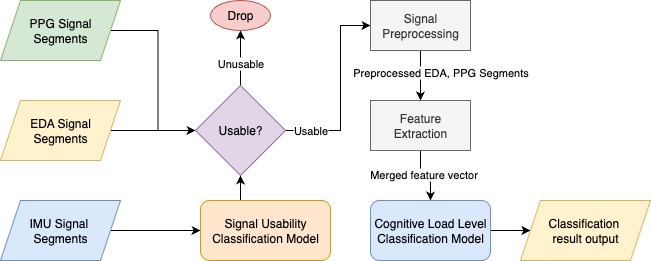Cognitive Pen
A Pen-Based Multi-Physiological Signal Monitoring System
2025
Ziqi Liu
Advisor: Yuntao Wang, Haipeng Mi
Continuous monitoring of physiological signals such as electrodermal activity (EDA) and photoplethysmography (PPG) is critical for assessing users’ psychological states in health and education contexts. However, acquiring high-quality signals remains challenging due to the sensitivity of sensor placement and motion artifacts.
This work presents a pen-based sensing device integrating EDA, PPG, and IMU sensors to enable unobtrusive and continuous physiological signal acquisition during natural handwriting interactions. The system’s applicability is validated in a cognitive load classification task, where results demonstrate that IMU-based filtering significantly enhances classification accuracy under motion.
This research offers a novel and practical solution for robust, low-burden psychological monitoring in everyday interactive contexts. The functional prototype and product design of this work have been collected by Xinya College, Tsinghua University, as an outstanding graduation project.
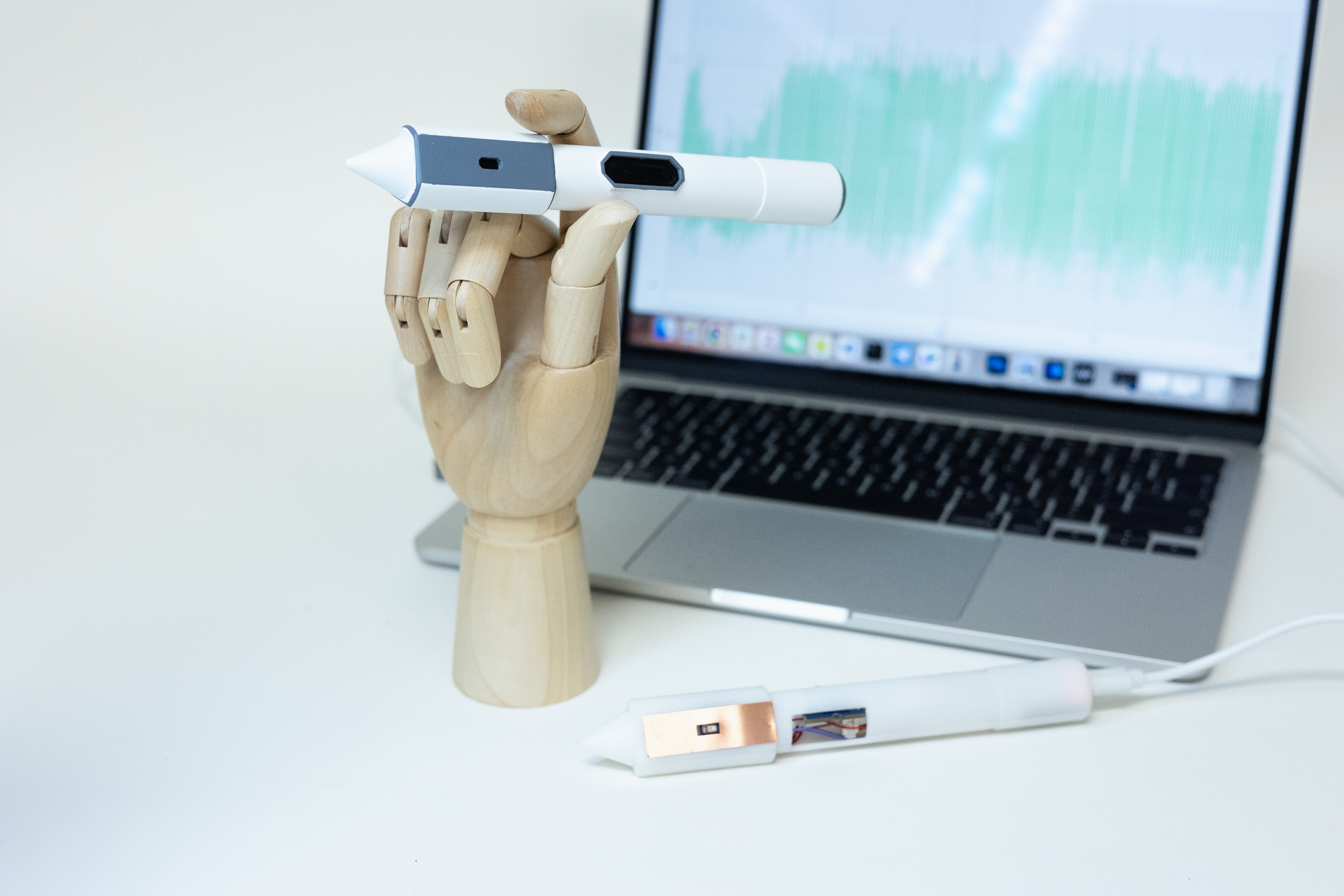
Pen-based Sensing System Design
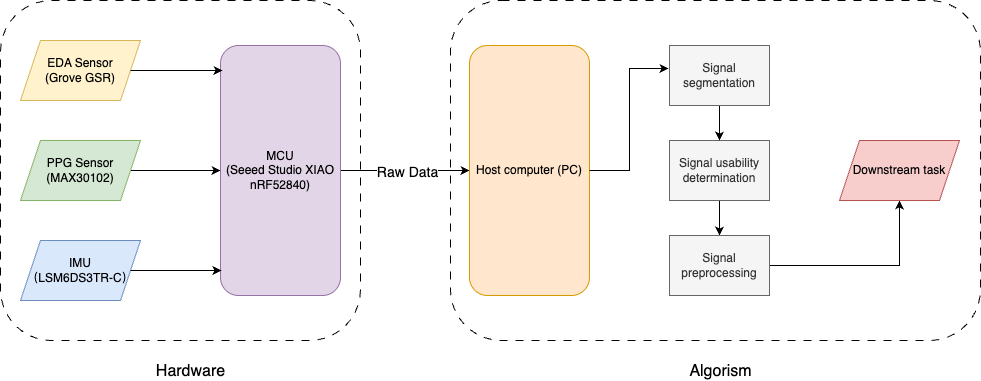
Hardware Design


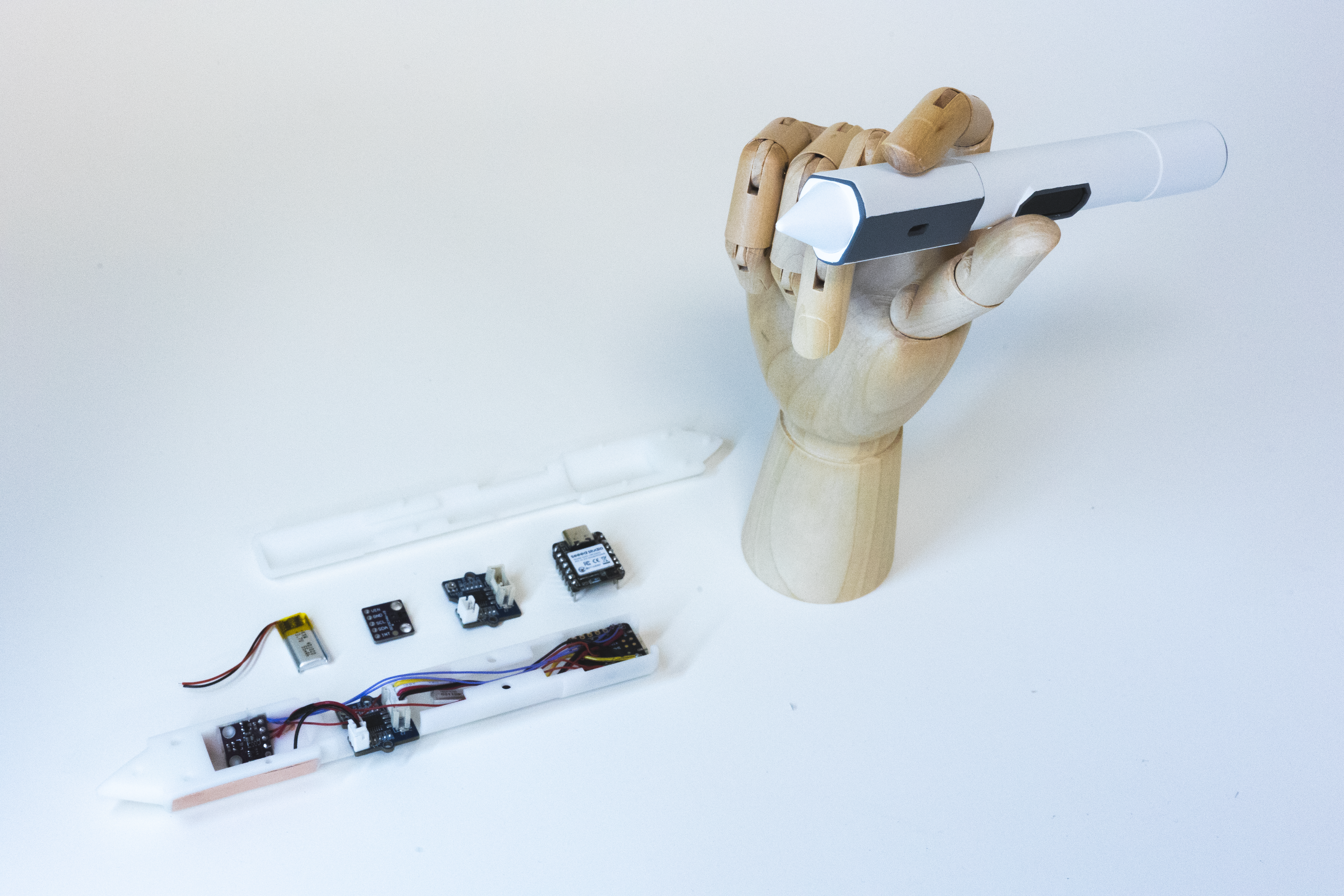
Algorism Design
The results of the signal correlation analysis are associated with the hand movement intensity reflected by the IMU data.
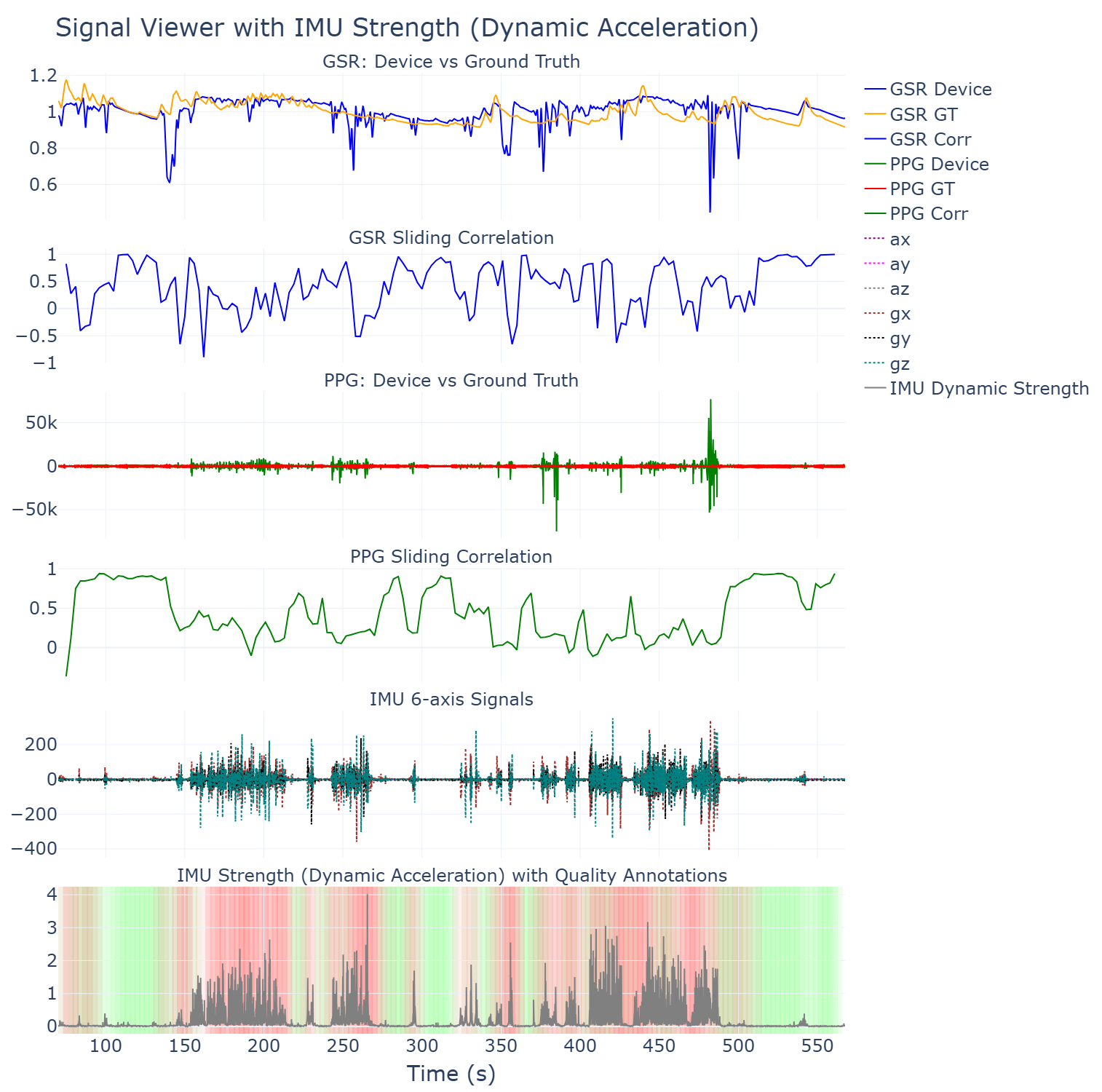
Training Method for the Signal Usability Classification Model:
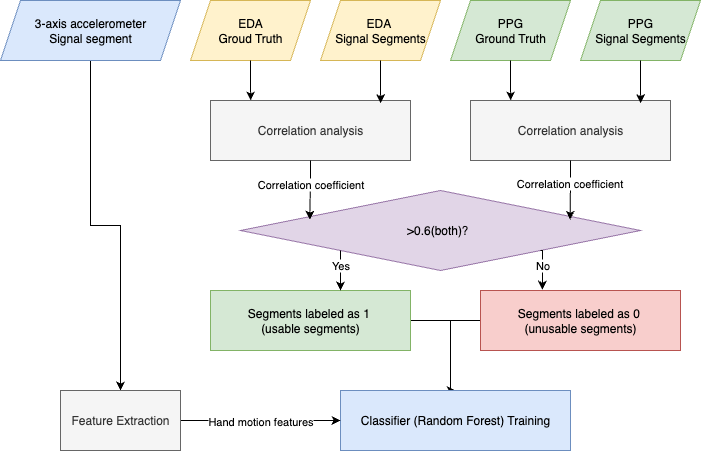
Workflow of Signal Usability Assessment and Cognitive Load Classification:
